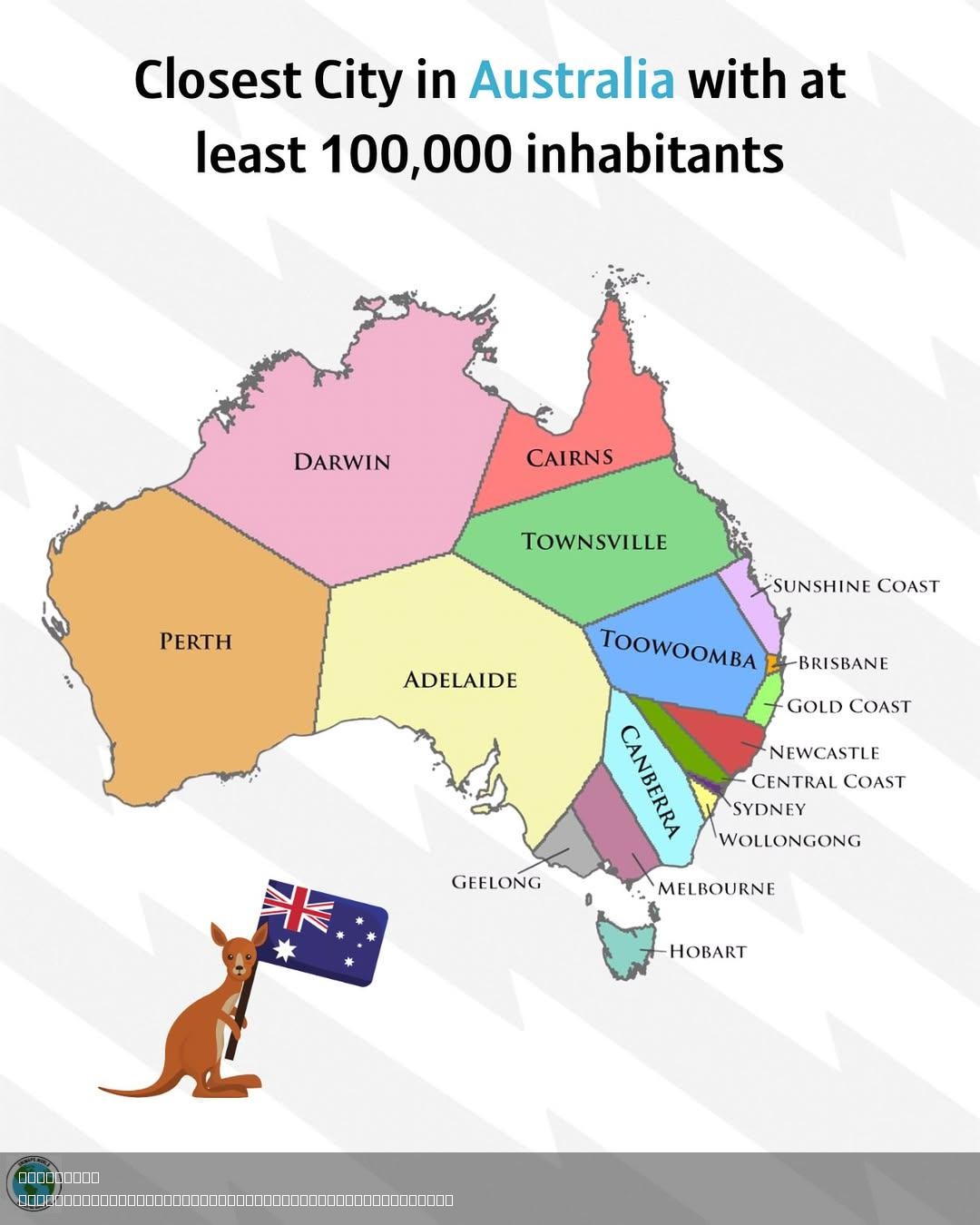Closest Australian City with 100,000 Inhabitants Map


Marcus Rodriguez
Historical Geography Expert
Marcus Rodriguez specializes in historical cartography and geographic data analysis. With a background in both history and geography, he brings unique...
Geographic Analysis
What This Map Shows
The "Closest Australian City with 100,000 Inhabitants Map" provides a clear visualization of the nearest urban centers in Australia that boast a population of over 100,000 residents. Each point on the map represents a city, allowing viewers to quickly identify which metropolitan areas are within reach of one another based on proximity. It’s a valuable tool for understanding urban distribution across the vast Australian landscape, particularly in relation to population density and accessibility.
This leads us to a deeper discussion about population distribution in Australia, which has some intriguing patterns shaped by geography, history, and socio-economic factors.
Deep Dive into Population Distribution in Australia
Australia is a country characterized by vast expanses of uninhabited land interspersed with densely populated urban centers. The population distribution is highly uneven, with the majority of Australians residing in coastal cities. In fact, as of the latest census, over 80% of the population lives in urban areas, and the largest cities—Sydney, Melbourne, Brisbane, Perth, and Adelaide—are all situated along the coast.
Interestingly, Sydney holds the title as the most populous city, with approximately 5.3 million inhabitants, while Melbourne follows closely behind with about 5 million. These cities are not just population hubs; they are also cultural and economic powerhouses. The demographic makeup of these urban centers is diverse, influenced by waves of immigration and local cultural heritage.
The presence of cities with populations exceeding 100,000 serves as a significant marker of urban development and economic opportunity. Cities like Gold Coast, Newcastle, and Canberra also play critical roles in their regions, offering various amenities and services that attract residents.
What’s fascinating is the phenomenon of urban sprawl, particularly in cities like Melbourne, where the urban footprint continues to expand into surrounding areas. This growth often leads to the development of suburban regions, which can create a complex web of commuting patterns and infrastructure demands. As cities expand, the need for effective urban planning becomes increasingly important to accommodate growing populations and maintain quality of life.
Regional Analysis
Breaking down the map reveals distinct regional characteristics across Australia. In New South Wales, for example, not only do we have Sydney, but cities like Central Coast and Wollongong also surpass the 100,000 inhabitant mark. This clustering of larger populations can be attributed to the favorable climate and economic opportunities in these areas.
In contrast, Queensland’s growth trajectory is marked by cities like Brisbane and the Gold Coast, which are rapidly expanding due to lifestyle choices and economic diversification. Interestingly, these cities attract a younger demographic, contributing to a vibrant urban culture that is distinct from other regions.
Western Australia, represented by Perth, shows a different pattern, where mining and resource extraction industries drive population growth. The state's economy is heavily reliant on these sectors, attracting workers from across the country and abroad, thus influencing the demographic makeup of Perth.
Moreover, cities like Adelaide offer a more relaxed lifestyle and lower cost of living, which attracts families and retirees. This variation in regional characteristics showcases how different areas within Australia cater to diverse populations, reflecting social and economic trends.
Significance and Impact
Understanding the distribution of cities with populations over 100,000 is crucial for numerous reasons. It informs infrastructure development, resource allocation, and urban planning strategies. As cities continue to grow, urban planners and policymakers face the challenge of creating sustainable environments that can support larger populations without sacrificing quality of life.
Moreover, with current trends in climate change and urbanization, there is increasing pressure on cities to adapt. Issues like housing affordability, transportation, and environmental sustainability are at the forefront of debates in urban centers across Australia. The closest cities to one another can often serve as critical hubs for economic collaboration and resource sharing, making their understanding even more vital.
As we look towards the future, projections indicate that urban populations in Australia will continue to grow, with some estimates suggesting that the total population could reach over 30 million by 2050. With such growth, the need for strategic planning and innovative solutions in urban development will be more important than ever.
In conclusion, the "Closest Australian City with 100,000 Inhabitants Map" not only provides a snapshot of urban centers but also invites us to consider the broader implications of population distribution in a rapidly changing world.
Visualization Details
- Published
- August 6, 2025
- Views
- 96
Comments
Loading comments...